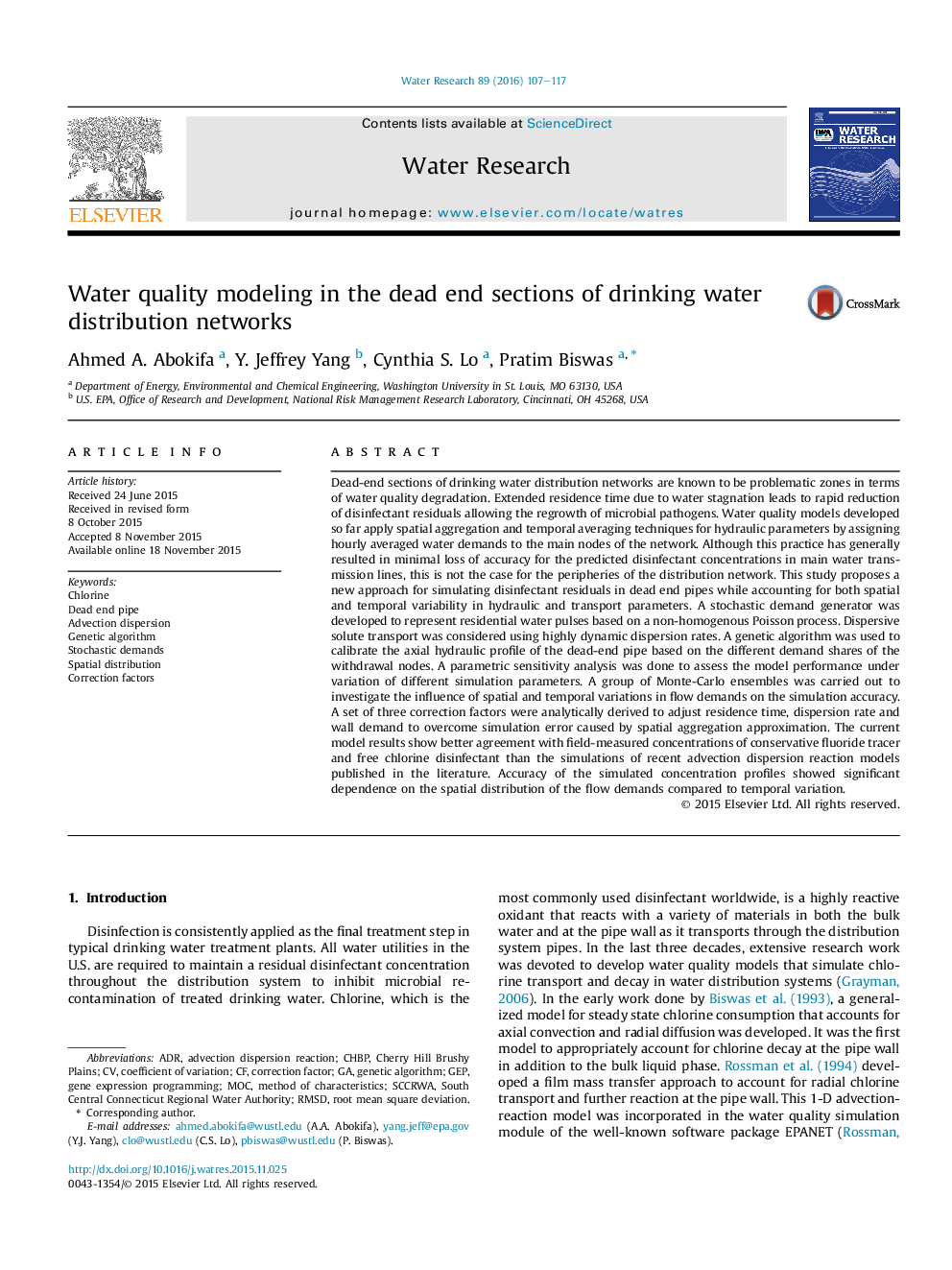| کد مقاله | کد نشریه | سال انتشار | مقاله انگلیسی | نسخه تمام متن |
|---|---|---|---|---|
| 4481025 | 1623079 | 2016 | 11 صفحه PDF | دانلود رایگان |
• A new model for simulating disinfectant residuals in dead ends was developed.
• Enhanced accuracy was achieved by considering spatiotemporal variation of flow demands.
• Spatial aggregation of flow demands was shown to cause major simulation error.
• Correction factors were analytically derived to overcome this error.
Dead-end sections of drinking water distribution networks are known to be problematic zones in terms of water quality degradation. Extended residence time due to water stagnation leads to rapid reduction of disinfectant residuals allowing the regrowth of microbial pathogens. Water quality models developed so far apply spatial aggregation and temporal averaging techniques for hydraulic parameters by assigning hourly averaged water demands to the main nodes of the network. Although this practice has generally resulted in minimal loss of accuracy for the predicted disinfectant concentrations in main water transmission lines, this is not the case for the peripheries of the distribution network. This study proposes a new approach for simulating disinfectant residuals in dead end pipes while accounting for both spatial and temporal variability in hydraulic and transport parameters. A stochastic demand generator was developed to represent residential water pulses based on a non-homogenous Poisson process. Dispersive solute transport was considered using highly dynamic dispersion rates. A genetic algorithm was used to calibrate the axial hydraulic profile of the dead-end pipe based on the different demand shares of the withdrawal nodes. A parametric sensitivity analysis was done to assess the model performance under variation of different simulation parameters. A group of Monte-Carlo ensembles was carried out to investigate the influence of spatial and temporal variations in flow demands on the simulation accuracy. A set of three correction factors were analytically derived to adjust residence time, dispersion rate and wall demand to overcome simulation error caused by spatial aggregation approximation. The current model results show better agreement with field-measured concentrations of conservative fluoride tracer and free chlorine disinfectant than the simulations of recent advection dispersion reaction models published in the literature. Accuracy of the simulated concentration profiles showed significant dependence on the spatial distribution of the flow demands compared to temporal variation.
Journal: Water Research - Volume 89, 1 February 2016, Pages 107–117
